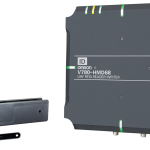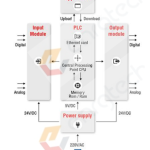
Introduction
The role of microcontrollers is paramount in the vast landscape of electronics and embedded systems. These miniature computing devices serve as the brains behind an array of gadgets, from household appliances to industrial machinery. However, not all microcontrollers are created equal. Scalable microcontrollers, in particular, offer unique features and advantages that empower designers with unparalleled flexibility and adaptability in their creations. This article covers different aspects of scalable microcontrollers, exploring their capabilities, significance, and opportunities in improving design flexibility in multiple industries.
What are Scalable Microcontrollers?
Scalable microcontrollers are a category of microcontroller units (MCUs) designed to offer varying levels of computational power, memory size, and peripheral features within the same family. These MCUs can range from simple 8-bit controllers microchip for basic tasks to complex 32 and 64-bit controllers to handle sophisticated operations. What sets scalable microcontrollers apart is their adaptability to diverse application requirements through flexible configurations. Unlike traditional fixed-function microcontrollers, scalable variants offer multiple options regarding processing power, cost and power efficiency, modular architecture, memory, and peripherals. These exceptional attributes allow designers to tailor their designs precisely to the task at hand.
Understanding Scalability in Microcontrollers
Scalability in microcontrollers refers to the ability of a microcontroller system to tailor the processing power, memory capacity, and peripherals according to particular application requirements. This flexibility is essential in today’s fast-paced tech world, where devices must perform multiple functions efficiently while using minimal power and space. Microcontroller scalability ensures the microcontroller can adapt to various application needs and future enhancements without significant redesign or replacement. Some different aspects of scalability in microcontrollers include:
- Performance Scalability
- Memory Scalability
- Peripheral Scalability
- Software Scalability
- Power Scalability
- Network Scalability
- Cost Scalability
The Significance and Examples of High-Performance Scalable Microcontrollers
Scalable microcontrollers are revolutionising the way designers approach system development. Typically, scalable MCUs share common cores, peripherals, and development tools, simplifying the development process across different performance and feature sets. By leveraging the power of a scalable microcontroller, designers and engineers can create more versatile, efficient, and forward-thinking products. Examples include ARM Cortex-M Series, Microchip PIC and AVR Series, STMicroelectronics STM32 Series, Texas Instruments MSP430 Series, and Infineon XMC Series.
How Scalable Microcontrollers Can Enhance Design Flexibility?
Scalable microcontrollers can enhance design flexibility across various industries in various ways, such as:
Simplified Prototyping and Development
Scalable microcontrollers streamline the prototyping phase of development. Engineers can quickly develop and test new ideas without committing to a specific MCU. This flexibility accelerates the innovation process, allowing more rapid iteration and refinement of designs. Moreover, scalable MCUs often come with robust development environments and toolchains, making it easier to debug and optimise code.
Modular System Design
Modularity is a key aspect of modern electronic design. Scalable MCUs create modular systems where different components can be easily swapped or upgraded. This modularity is particularly beneficial in complex systems where different subsystems need to work seamlessly together.
Enhanced Performance Scalability
Performance scalability is another critical advantage. Scalable microcontrollers can be configured for different performance levels, from low-power, energy-efficient operation to high-performance computing. This scalability allows engineers to balance power consumption and processing power according to the specific needs of the application. This also ensures optimal performance without unnecessary power drain.
Simplified Maintenance and Upgrades
Maintenance and upgrades are simplified with scalable microcontrollers. Instead of replacing the entire system, engineers can upgrade specific components or firmware to improve performance or add new features. This capability extends the lifecycle of products and reduces the total cost of ownership.
Scalable Microcontrollers in IoT and Smart Devices
The IoT and smart devices sector is perhaps the most significant beneficiary of scalable microcontrollers. These devices often require a balance of performance, power efficiency, and connectivity, all of which scalable MCUs can provide. From smart sensors to connected appliances, scalable MCUs enable the development of innovative IoT solutions that can adapt to evolving technological landscapes. In addition, other notable applications of these MCUs include consumer electronics, industrial automation, the automotive industry, and smart home automation.
Future Trends in Microcontroller Scalability
Looking ahead, the trend in microcontrollers points towards even greater integration and intelligence. Future scalable MCUs are likely to incorporate advanced features like AI capabilities and improved connectivity options, such as 5G and Wi-Fi 6. These technologies will further expand the MCU’s applicability in areas like IoT and smart devices.
Bottom Lines
Scalable microcontrollers are transforming the landscape of electronic design, offering an unprecedented level of flexibility and efficiency. Their notable features include enhanced design flexibility, cost efficiency, and accelerated time-to-market, which makes them indispensable in various industries. By understanding and utilising these powerful tools, designers can create more adaptive, cost-effective, and forward-compatible products that cater to the evolving demands of technology and consumers.





















